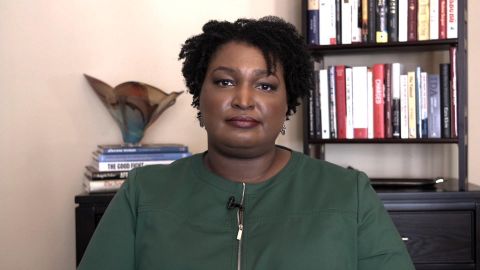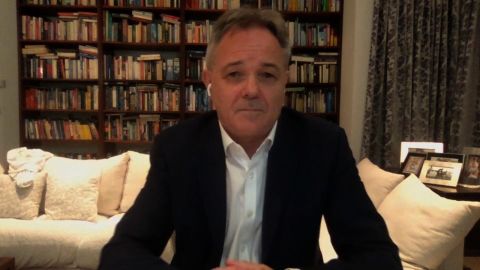Read Transcript EXPAND
JEREMY FARRAR, DIRECTOR, WELLCOME TRUST: Yes, just remember, we’re at about 6,000 new cases a day at the moment across the U.K. If the doubling time is allowed to continue, if we allow community transmission to continue as it currently is, those are the sorts of numbers we would get to in the next month or so. It’s not inevitable that we get there. Public health works by prevention. It prevents things happening. It prevents that exponential increase going on. And Britain faces a choice now. If we do nothing, those numbers may well prove to be true. 50,000 cases a day in the U.K. And you cannot keep those cases out of hospital. You cannot just keep cases in the younger community who seem to be at low risk of severe disease. Because communities are very mixed. Younger people work with people at higher risk, the elder people with vulnerable other health conditions. So, if we see this increase, if we allow community transmission to keep going, if we allow this exponential increase, we will get to those sorts of figures in the next month or so. But we don’t have to. One of the lessons from February and early March and across Europe was that those countries that acted earlier, that put in place some degree of physical distancing and separation and other measures were able to contain their outbreaks more successfully and prevent that horrendous surge in hospital admissions and deaths. Earlier action, not having any regrets and cutting off this epidemic from increasing is, I think, the message from today’s press conference.
CHRISTIANE AMANPOUR: What does that look like? I mean, what does a mini circuit breaker look like? What does it mean? What’s the science behind that?
FARRAR: Well, a circuit breaker is just, I think, one of the ideas put forward. A circuit break means you would take two or three weeks, you would really impose fairly draconian measures, and then you would hope to lift them in three weeks or four weeks’ time. And — but actually, there are other things that can be done as well as — or instead of circuit breakers. If we’re sensible, if we reduce the high-risk contacts, we know more about this infection now than we did in February and March. We know that indoor spreads, household mixing, unsafe work practices, these are the sorts of environments where transmission is being driven by. And if we could limit that and we reduce that chance for transmission within households, between households, in unsafe working environments, limit the amount of time we spend in close proximity to other people, and yes, wearing masks and hand washing is critically important. If we do that, we should be able to suppress the transmission in the community, and we should be able to prevent that sort of exponential growth that you’re talking about and avoiding what we went into in March and April in this country as in much of Europe, which was truly horrendous.
About This Episode EXPAND
Christiane speaks with Stacey Abrams about Ruth Bader Ginsburg most famous dissent–against the decision to roll back major parts of the Voting Rights Act. She also speaks with Jeremy Farrar about the new coronavirus surge that has been steadily mounting in Europe. Walter Isaacson speaks with Doris Kearns Goodwin about the legacy of Ruth Bader Ginsburg.
LEARN MORE


